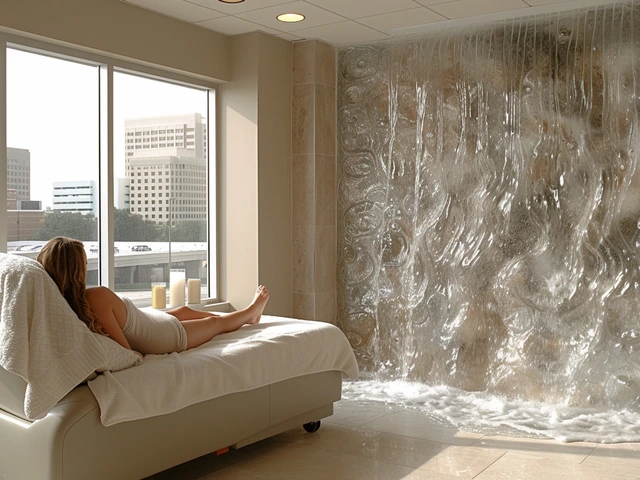The Art and Science of Trager Therapy
Introduction to Trager Therapy
Alright, let's dive straight in, shall we? I'm sure many of you have heard the term 'Trager Therapy,' but still are scratching your heads, thinking what in the world is that? Fear not, because yours truly, Lennon, is here to unravel the mystery. Trager Therapy, also known as Trager Approach, is a type of somatic education and physical therapy, graced upon us by Dr. Milton Trager.
Dr. Trager was a curious and anticipating soul, always eager to find new ways to ease human suffering. As a teenager, he helped a friend with back pains by intuitively maneuvering his muscles and tissues. Surprised and excited by the phenomenal results, he pounced on a journey to develop this method throughout his entire life, finally establishing this therapy technique. Now, doesn't that sound rather dashing?
Understanding the Trager Approach
The Trager Approach revolves around a concept that might come off as quite foreign and exotic to us modern folks. It's all about feeling good. Yes, you read that right. Rather than focusing on eliminating pain, it aims to encourage feelings of relaxation, ease, and lightness, believing that this will result in pain relief and improved physical mobility.
Trager Therapy assumes that our body remembers the feeling of being free and unstrained, though these memories are often buried deep under the hustle-bustle of our daily lives. Through gentle, rocking movements, this therapy basically asks the body to remember what it feels like to be free, light and relaxed. You can almost see your body going, "Aha! That's what it feels like to take things easy!"
How does Trager Therapy Work?
Now we get down to brass tacks. A Trager session begins with the therapist employing a series of soft, rhythmic movements, primarily using their hands, to gently rock different body parts. Imagine lying down, letting go of every bit of tension, while someone else does the work of making you feel good. Now that's a deal, right?
These gentle movements, which can be as subtle as a ripple in a pond or as rhythmical as gentle waves on a beach, help the muscles relax. The muscles 'remember' this state of relaxation and aim to maintain it even after the session ends. Essentially, it's like going for an hour at the spa, but your body gets to party in that relaxed state for much longer!
Benefits of Trager Therapy
Wait, there's more! The benefits of Trager Therapy are not just limited to relaxation and an increased sense of well-being. Heaps of research suggest that this therapy is beneficial for those suffering from a range of conditions. These include back and neck pains, stress, mobility difficulties, psychological trauma, neurological disorders, and even chronic conditions like fibromyalgia and multiple sclerosis. This therapy has also been reported to improve athletic performance. Talk about being a jack-of-all-trades!
If you're still feeling a bit sceptical, let me tell you a little story. A few years ago, I had an unfortunate bicycle accident that resulted in a rather stiff and painful shoulder. After several weeks of enduring a nagging pain, I decided to give Trager Therapy a shot. And guess what? Only after a handful of sessions, my shoulder felt much better, and the movements became smoother. I was quite amazed at how this therapy made a noticeable difference!
Diving Deeper into the Trager Approach
Trager Therapy isn't just about the physical movements. It incorporates an aspect called 'Mentastics,' which are simple, easy-to-do movements that are designed to promote a state of deep mental relaxation. It's like yoga meets tai chi, but cooler. And trust me, these Mentastics have a fluffy, playful quality to them that can leave you feeling all breezy inside!
Mentastics reinforces the feelings generated during a Trager session and can be integrated into your daily life. Imagine feeling a twinge of stress at work? No worry! Just mentally recall the sensations felt during your last session, do some Mentastics, and watch the tension melt away.
Training to be a Trager Therapist
By this point, some of you might be thinking, "This Trager Therapy malarkey sounds good. I might like to pursue it." Good news! Becoming a Trager Practitioner is a surprisingly flexible and rewarding process. It typically involves a mix of coursework, hands-on training, and supervised practice. Plus, you get to help individuals feel more relaxed and move with greater ease. Talk about job satisfaction!
Bear in mind though, like any profession, there's more to being a successful Trager therapist than just getting certified. It's equally about building rapport with patients, understanding their needs, and being able to modify the technique to suit their unique requirements. It's a journey which calls for patience, dedication and empathy.
Therapies Complementary to Trager Approach
Now, as comprehensive and beneficial as Trager Therapy might be, it's not a standalone treatment for all conditions. Sometimes, it may need to be paired with other therapeutic methods to provide optimum results.
Physiotherapy, occupational therapy, massage, acupuncture, or even medication could complement this treatment. Talk to your healthcare provider to find the best personalized therapy routine for you. Remember, it's not about a one-size-fits-all approach; it's about what works for you!
Wrapping Up
So, there you have it - an in-depth exploration of Trager Therapy. It's a unique approach that harnesses the wisdom and memory of our own bodies to help us feel more relaxed, mobile, and pain-free. And the best part? It's all achieved through gentle, non-invasive techniques.
Now, I'm no doctor, but from my experience, Trager Therapy might just be worth a try - whether you're looking for physical relief, a way to ease daily stress, or simply curious to embrace a new way of 'feeling good.' As always, consult with your healthcare provider before starting any new treatment.
So, what are you waiting for? It's time to let your body remember what it's like to feel free, light, and relaxed. And remember, in the words of Dr. Milton Trager, "what could be lighter than light?"







Comments